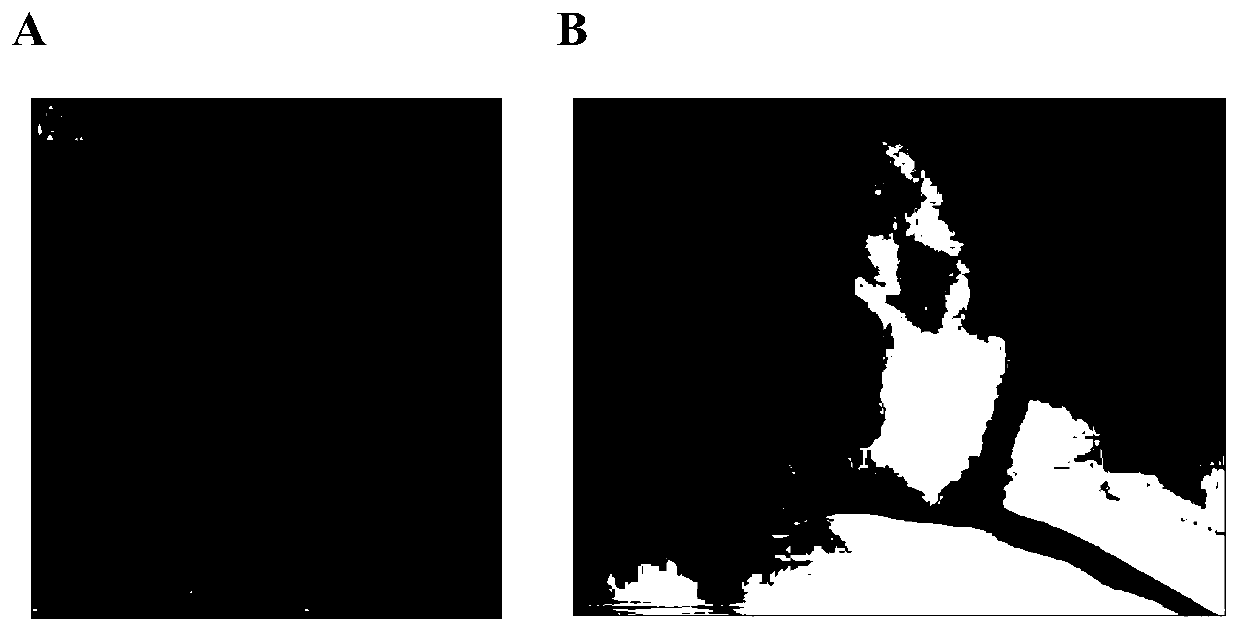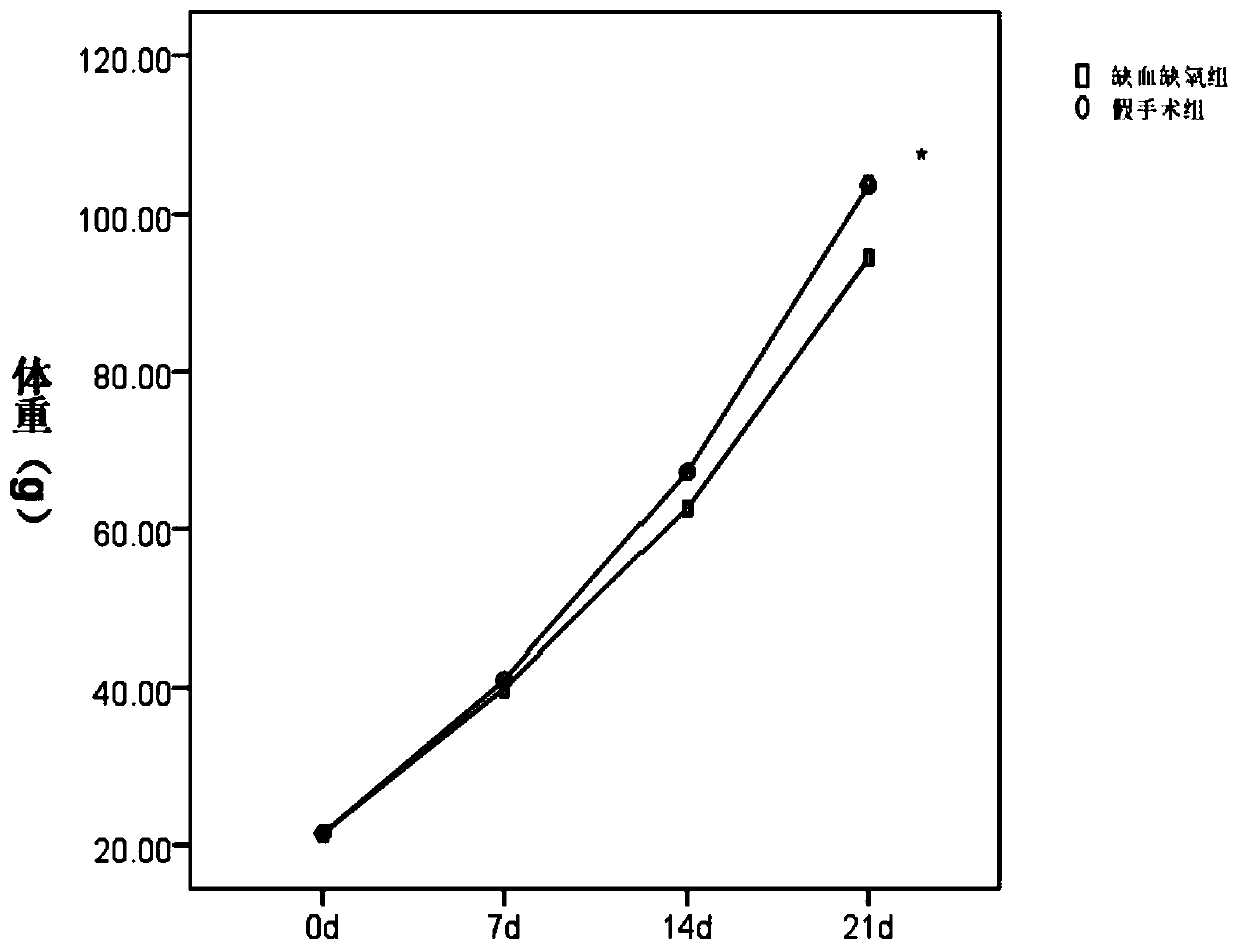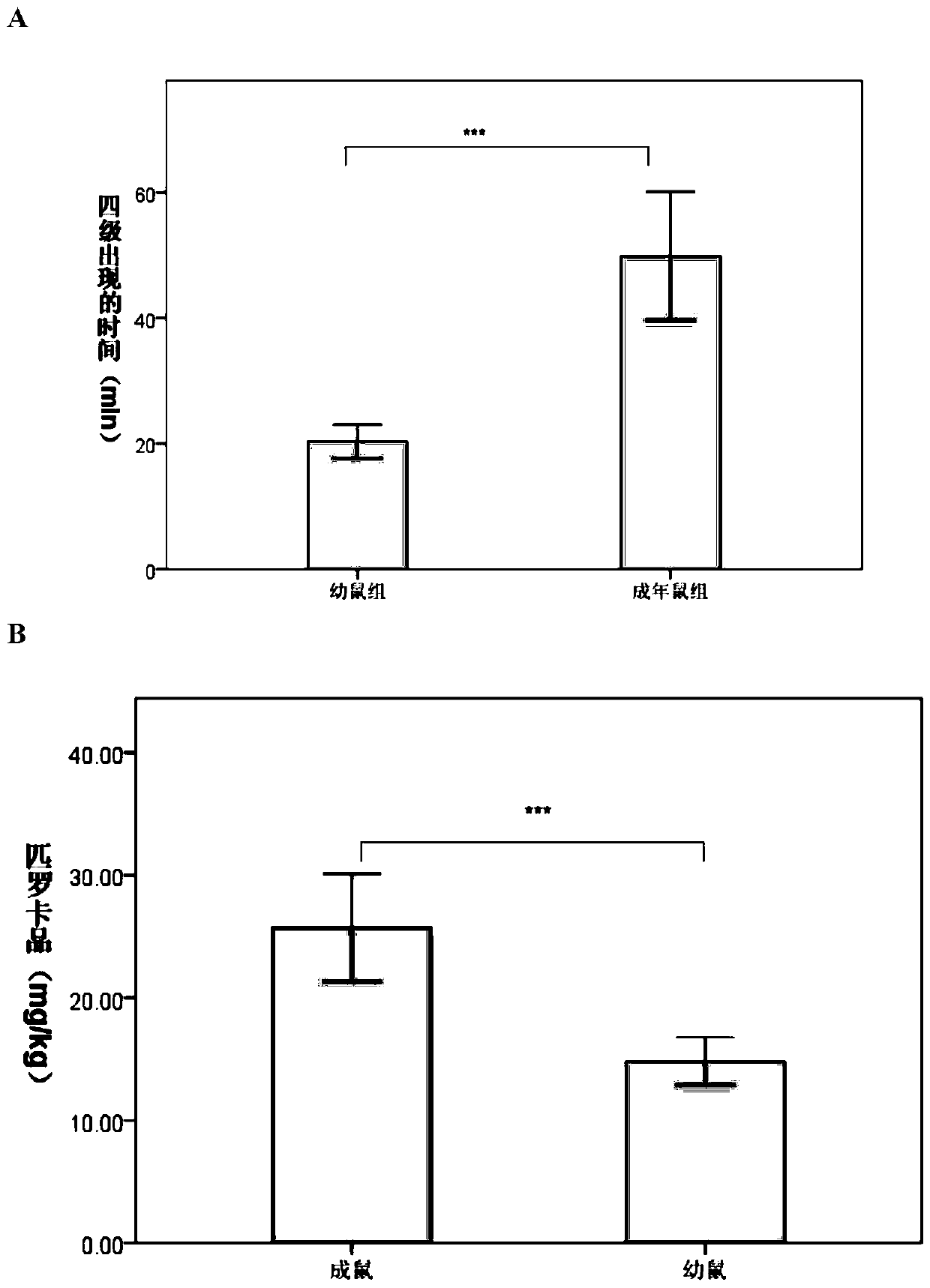Establishment method of cerebral-palsy-based temporal lobe epilepsy animal model
An epilepsy animal and a technology for establishing a method, applied in the research field of nervous system diseases, can solve problems such as unfavorable prevention and treatment methods, and achieve the effect of simple establishment method and high survival rate
- Summary
- Abstract
- Description
- Claims
- Application Information
AI Technical Summary
Problems solved by technology
Method used
Image
Examples
Embodiment 1
[0034] Design and manufacture of embodiment 1 ischemic hypoxic cerebral palsy model
[0035] 1) 7-day-old SD rat young mice (body weight 18-24g) were anesthetized with 10% chloral hydrate (about 350mg / kg) for unilateral common carotid artery ligation, cut off the neck hair, and cut it open with ophthalmic scissors Make an incision of 0.5 cm, and then use ophthalmic forceps to perform blunt dissection to expand the incision to 1.0-1.5 cm and fully expose the trachea and sternocleidomastoid muscle. Use a glass minute needle to separate the right common carotid artery and make its free segment about 5 mm In the experimental group, the upper and lower ends of the free segment were ligated with 4-0 suture and the centrifugal end was cut off. In the sham operation group, only the right common carotid artery was stretched with glass points, and the right common carotid artery was not ligated, and finally sutured. Make an incision and sterilize the incision.
[0036] 2) Hypoxia treat...
Embodiment 2
[0039] Design and manufacture of embodiment 2 temporal lobe epilepsy model
[0040] 1. Construction process of temporal lobe epilepsy model
[0041] (1) Take the prepared SD rats, inject lithium chloride 127mg / kg intraperitoneally, put them back into the mouse cage for feeding, and the survival rate is 100%; take the SD rats that have been raised for 18 hours, inject scopolamine 10mg / kg intraperitoneally, and inject 30min Afterwards, 10 mg / kg of pilocarpine was injected intraperitoneally, and 10 mg / kg of pilocarpine was given to the rats that did not induce epilepsy 30 minutes after the injection of pilocarpine and induced Racine standard level 4 and above, and so on until successful Epilepsy of grade 4 or above was induced, repeated 4 times (that is, the total injection amount of pilocarpine was 40 mg / kg), and the induction was not successful when the total injection amount of pilocarpine was 60 mg, no more pilocarpine was added dosage and excluded from the group.
[0042] ...
Embodiment 3
[0056] Example 3 The impact of epileptic seizure time on the mortality of temporal lobe epilepsy animal models based on cerebral palsy
[0057] (1) Get 7-day-old SD rat pups (body weight 18-24g), obtain ischemic-hypoxic cerebral palsy rats according to the method in Example 1, send them back to pregnant mice, and raise them for 20 days;
[0058] (2) For the ischemia-hypoxic cerebral palsy rats (i.e. 27-day-old SD rats) fed for 19 days, the temporal lobe epilepsy animal model on the basis of cerebral palsy was induced according to the method of Example 2, wherein, in step (4) Among them, the rats whose epilepsy was successfully induced were divided into 3 groups (5 rats in each group) under strict monitoring for 60 min, 70 min and 80 min respectively, and the mortality rate at each stage was detected, as shown in Table 1.
[0059] Table 1
[0060]
[0061] From the results in Table 1, it can be seen that when the seizure time of the experimental rats in the post-cerebral pa...
PUM
 Login to View More
Login to View More Abstract
Description
Claims
Application Information
 Login to View More
Login to View More - R&D
- Intellectual Property
- Life Sciences
- Materials
- Tech Scout
- Unparalleled Data Quality
- Higher Quality Content
- 60% Fewer Hallucinations
Browse by: Latest US Patents, China's latest patents, Technical Efficacy Thesaurus, Application Domain, Technology Topic, Popular Technical Reports.
© 2025 PatSnap. All rights reserved.Legal|Privacy policy|Modern Slavery Act Transparency Statement|Sitemap|About US| Contact US: help@patsnap.com



